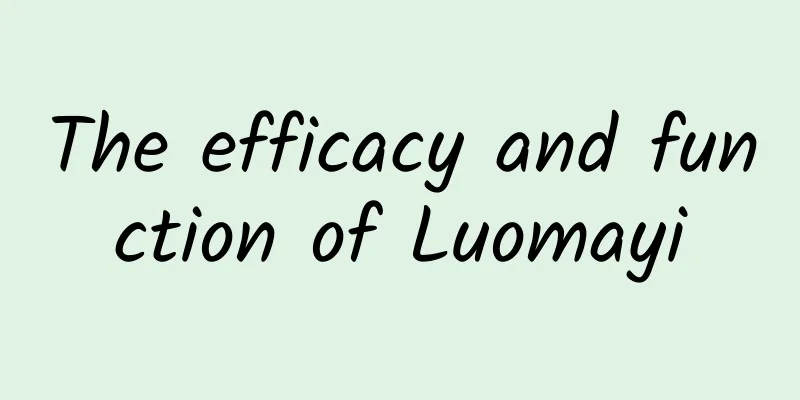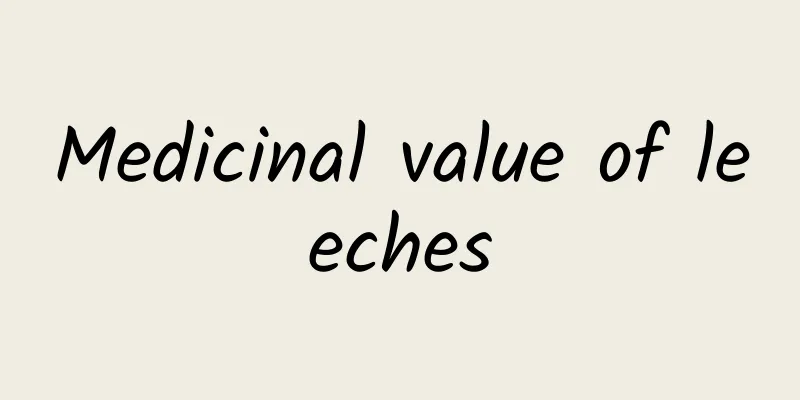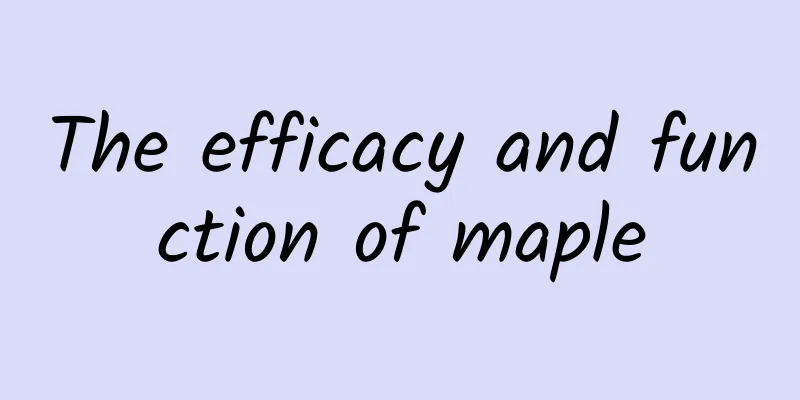The efficacy and function of Luomayi

|
Traditional Chinese medicine often has unexpected effects in the treatment of certain diseases, so you can choose it with confidence. However, when choosing Chinese medicine, you need to understand the medicine so that when treating the disease, you will know what kind of medicine is the best choice. Let us introduce the traditional Chinese medicine Luomayi. 【English Name】 Indian Epimeredi Herb [Other names] Horse clothes leaf, false perilla, native windproof, square stem, stinky grass, stinky perilla head, duck mitten, windproof grass, dirty grass, big bamboo grass, big sheep Gu Sao, wind-removing grass, stinky Su, wild Su Ma, wild Patchouli, wild Su, wild perilla, pig Ma Su [Source] Medicinal material source: the whole herb of Ledebouriella scoparia of the Lamiaceae family. [Original form] Saposhnikovia divaricata, erect herb, sturdy, branched, 1-2m high. The stem is quadrangular, densely covered with white short soft hairs. Leaves are opposite; petioles are 1-4.5cm long; bracts are leaf-shaped; leaf blades are broadly ovate, 4-9cm long, 2.5-6.5cm wide, acute at first, truncate and cuneate at base, with irregular teeth on margins, and hairy on both sides. The cymes are many-flowered, dense, arranged in dense or discontinuous long spikes at the top of the main stem and side branches; bracts are linear, 3-4mm long; calyx is bracelet-shaped, about 6mm long, with long stiff hairs and glandular pubescence and glandular dots on the outside, calyx teeth are 5, triangular-lanceolate, about 2.7mm long, with ciliated edges, which increase in size when fruiting; corolla is lavender, about 1.3cm long, glabrous on the outside, with a hair ring in the middle of the inner surface, upper lip straight, oblong, entire, lower lip flat, 3-lobed, middle lobe obcordate, with wavy edges and beards in the middle, lateral lobes are smaller and oval; stamens are 4, extending, three or two strong, filaments on both sides have membranous edges, covered with small cilia, the anterior pair of anther locules are parallel, and the posterior pair of anther locules degenerate into 1 chamber; ovary is glabrous, style is glabrous, stigma is 2-lobed; disk is flat-topped and crenate. The nutlets are nearly spherical, about 1.5 mm in diameter, black and shiny. The flowering period is from August to September, and the fruiting period is from September to November. [Habitat distribution] Ecological environment: Growing on forest edges or roadsides and other wastelands in tropical and subtropical areas at an altitude of 40-2400m. 【Properties】 1. Dried whole herb, 1-1.5m long. The stem is herbaceous, quadrangular, and up to 5mm thick. 【Chemical composition】 1. The whole plant contains volatile oil and bioalkali. The leaves also contain ovatodi-olide. The above-ground parts contain ovatodi-olide. The aerial parts contain aniso-folin A, apigenin-7-O-β-D-(2″,6″-di-O-coumaryl)glucoside, apigenin-7-O-β-D-(4″,6″-di-O-coumaryl)glucoside, 5-hydroxy-6,7,3′,4-tetramethoxyflavone, 5,4′-dihydroxy-6,7,3′-trimethoxyflavone and apigenin. The root contains tetracosane, tetracosanol, β-amyrin, friedelin, betulinic acid, as well as the diterpenoid compounds anisomelic acid, anisomelic acid and the flavonoid compound anisomelin. 【Nature and flavor】 Spicy; bitter; neutral 【Functions and indications】Relieve rheumatism and eliminate sores. It is used to treat colds and fevers; rheumatism and pain; strengthens the muscles and bones; for people with kidney deficiency, soak the head in wine and drink [Usage and Dosage] For oral use: decoct in water, 9-15g; or soak in wine. For external use: take appropriate amount, decoct in water for washing; or mash fresh product for application. [Discussions by various scholars] 1. "Essentials of Raw Medicinal Herbs" says: It can relieve pain, strengthen muscles and bones, eliminate wind and heat, remove poisonous sores, and relieve muscle and bone pain. People with kidney deficiency can take its head and soak it in wine to drink. It can eliminate rheumatism, strengthen muscles and bones, blacken the beard, improve eyesight, wash hemorrhoids, wash rickets, and reduce swelling. 【Excerpt】 Chinese Materia Medica The above is a brief introduction to the Chinese macaque. Through this we can understand that the Chinese macaque contains a variety of nutrients, which are very effective in treating and preventing some diseases. In daily life, everyone can eat it under the guidance of relevant people. |
<<: The efficacy and function of snails
>>: The efficacy and function of Yangjiaotao
Recommend
My face turns red and my heart beats fast when I see someone I like. What's wrong with me?
Adolescents are facing tremendous changes both ph...
The first cancer vaccine trial program with a scale of 1,000 people has been launched, marking a "milestone moment" in cancer treatment
Humanity may have taken a big step towards curing...
The efficacy and function of mountain pepper leaves
As a very common Chinese medicinal material in da...
The efficacy and function of big red hairy leaves
There are many types of Chinese medicine. When we...
The coldest weather in history meets the hottest weather in history - A brief discussion on the extreme abnormality of the weather during this year's National Day holiday
1. The meaning of extreme and abnormal In order t...
Seasonal changes on the tip of your tongue: Can you eat out-of-season fruits?
For a long time, people have had a subtle attitud...
Beware! Typhoon Mulan is approaching
The reporter learned from the Hainan Provincial M...
The efficacy and function of flycatcher
As people's living standards improve, they pa...
The efficacy and function of four-finger threadfin bream
For many Chinese people, traditional Chinese medi...
What are the effects and functions of Artemisia capillaris?
Artemisia capillaris has a good liver-protecting ...
What is the function of infrared space telescope? What twinkling stars have been photographed?
Astronomers hate cloudy days. There is nothing wo...
What are the differences between rivers, lakes, ponds, abysses, and pools? Let's take a look at China's rivers and lakes!
Don't underestimate water. You should know th...
Why does the Earth have an atmosphere? How was the Earth's atmosphere formed?
Produced by: Science Popularization China Author:...
Landslide in Guizhou has caused 10 deaths and 4 missing! How to save yourself when encountering a landslide?
At around 19:00 on January 3, 2022, a landslide o...









